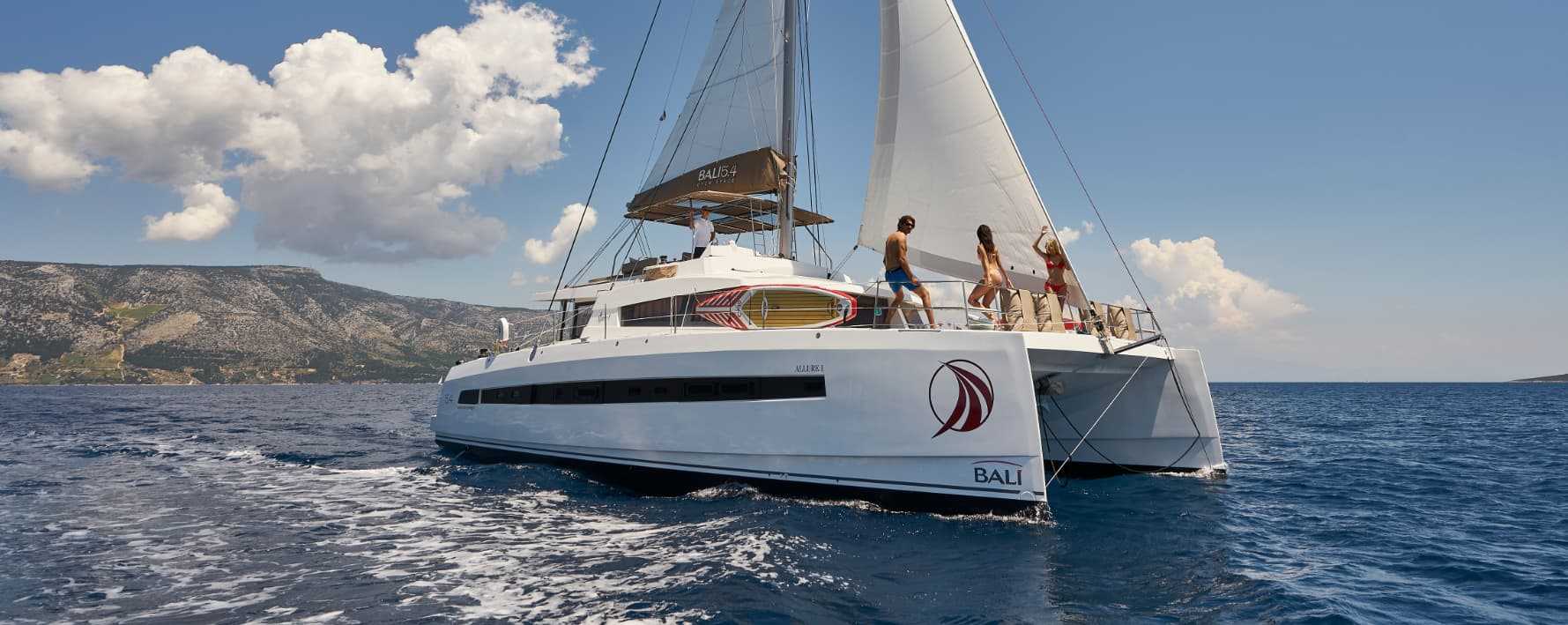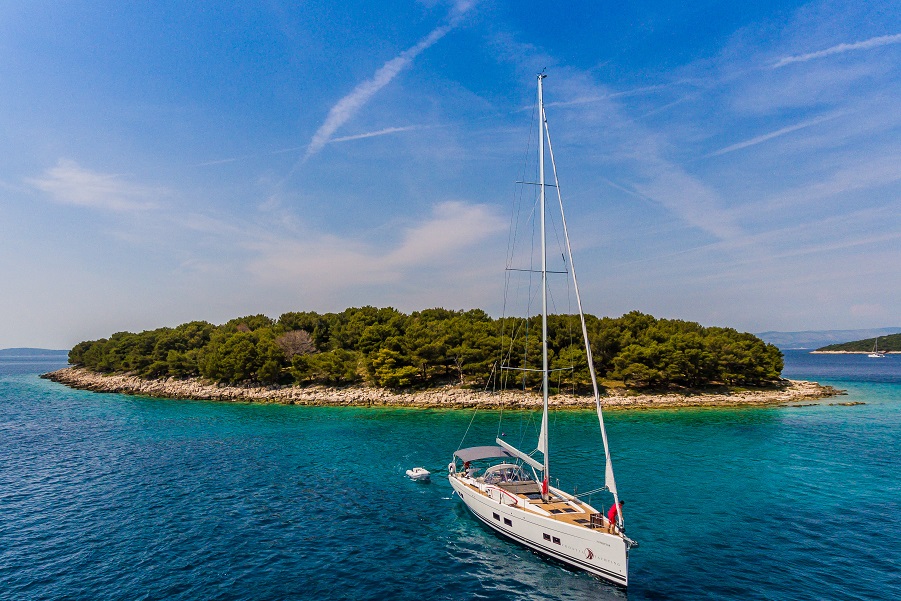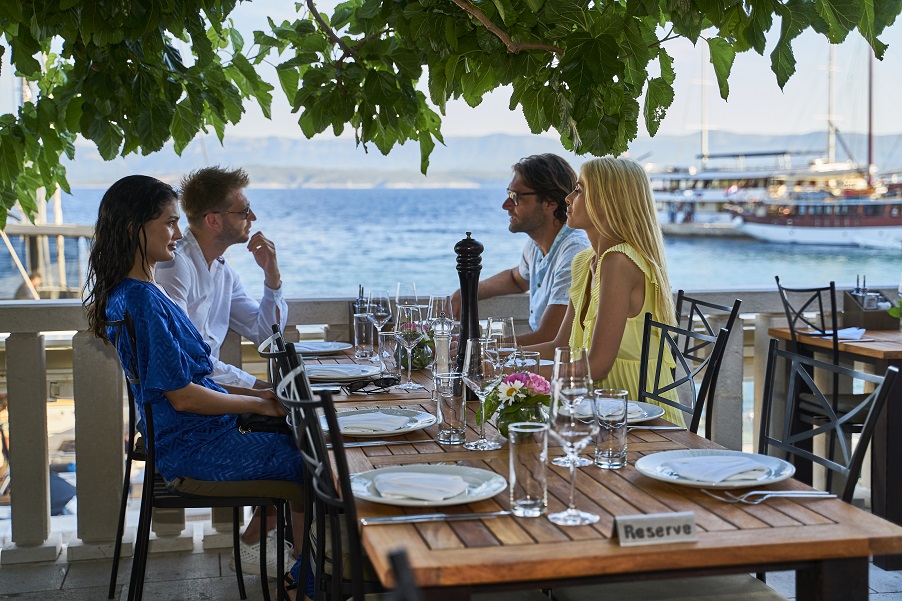Vis Island Military History: A WWII Gem in the Adriatic

The small but mighty Vis is the farthest inhabited island off the Croatian coast. Known as an authentic island destination that is far less developed and underpopulated than its neighbors, Hvar and Korčula, Vis is applauded as an Adriatic charm still unspoiled by the heavy footprints of tourism. Where life still moves at the laid-back pace of its famous fishers, Vis today is also a sailing destination that draws in an increasing number of yacht charters every summer.
But that wasn’t always the case.
Before Blue Cave tours, Vugava wine, and the tasty local Viška pogača pie were more widely known in Dalmatian tourism; Vis Island had another trick up its sleeve.

Vis Island military history
Now, in order to understand Vis Island military history, we need to go back to the beginning. The history of Vis dates back to prehistoric times. Namely, Eneolithic pottery was excavated in the Teuta cave on the northern side of the island, and there are a dozen mounds and four hillfort settlements scattered around the island associated with the Early, Middle, and Late Bronze Ages. Furthermore, finds from graves on the south side of the island near the Taleška glavica hillfort date from the Early Iron Age (around 800 to 600 BC). In the first millennium BC, the island was held by the Illyrian Liburnians. Then, at the beginning of the 4th century BC, the ancient Issa developed in the area of today's Vis town as the most important Greek colony on Croatian soil, founded by the Syracusan tyrant Dionysius, the Elder.
After the island fell to the Romans in 46 BC, Venetians controlled it in the 10th century AD when it was part of the Hvar community. But this is where things get interesting. After it fell to the French and then the Austrians, Vis was exposed as a convenient military refuge that could ward off invaders in the 19th century. Due to its excellent geographical position, round shape, and small size (90.26 square kilometers), the Battle of Lissa between the British, French, and Venetians took place on the island in 1811, which resulted in British bases like St. George Fortress, which you can still visit today. The second crucial naval battle, or the Battle of Vis, took place between the Austrian and Italians in 1866, which the Austrians won.
The Austrian Empire ultimately fell and the island was occupied by Italians from 1918 to 1920 until World War II kicked off, leaving Vis as the only island unoccupied by Germans.
Vis Island military history during WWII
Unknown to many apart from die-hard history buffs and, of course, Croatians, during WWII, Vis played a vital role in the anti-fascist movement. It was occupied by Italy in 1941, and after its fall in 1943, the island was taken over by Partisan rule and never occupied by the German army. In addition to the Partisans, the Allied forces were stationed on Vis, and an airport was built, which became a symbol of resistance and defiance to the German war machine. Vis was the center of Partisan rule and Allied military missions from 1944. When there was the greatest danger from German landings on Vis, much of the island’s population was temporarily evacuated to the El Shatt camp near the Suez Canal in Egypt. Some 25,000 Dalmatian civilians were sent to the refugee camp in Egypt from 1944 to 46, departing from Vis to Bari and onto the Sinai desert. With the liberation of the country, the role of Vis as an isolated stronghold ceased, its population returned, and reconstruction began.
During socialist Yugoslavia, Vis was home to more than 30 military facilities and was closed to foreigners until 1989 - and the Yugoslav army left Vis only in 1992!
But why was Vis Island military history significant during WWII?

Geographically distant from the mainland and other central Dalmatian islands, Vis remained out of reach of German coastal artillery batteries and significantly hampered German plans to capture it. At the end of 1943, when German forces invaded the Dalmatian coast in order to take the positions left by the Italians after the capitulation in September 1943, Vis remained the last retreat for Partisan troops and refugees from destroyed areas who gathered there waiting for the final decision of the Supreme Headquarters of the National Liberation Army. At that time, Allied units were located on Vis, and the fate of the armed resistance on the territory of the entire occupied country lay in resolving the dilemma - whether to defend Vis or leave it and evacuate refugees and all military units to Italy? The fateful decision to defend Vis together with the Allies solved the long-term question of the Partisan movement’s survival and led it towards the final victory over the enemy.
Vis officially belonged to Yugoslavia after the war, which President of the Socialist Federal Republic of Yugoslavia Josip Broz Tito used to turn the island into the central Yugoslav People's Army (JNA) naval base. During this time, the island was off-limits to all foreigners - all that time until 1989! Not only does this add to Vis’s unspoiled charm, but many of the military souvenirs remain for tourists to see today.
Vis Island military history today
Tito's Supreme Headquarters were left mostly abandoned after the JNA started leaving the island in 1989, allowing for some super cool sightseeing while sailing through Dalmatia. There are even dedicated Land Rover tours that take you off-roading to explore all of these WWII charms. From underground tunnels to cannons, Cold War bunkers, and abandoned warehouses. And we can’t forget Cape Stupišće, where the former cannon and rocket base is located, and the Vela Glava atomic rocket command!
But that’s only part of it.
Because Vis was the strategic base for the JNA, Tito had to build a submarine base that is tucked deep into a hill close to the town of Vis. This way, it couldn’t be visible by air. At 110 meters long, the base is still open today and is best visited by speedboat. This is undoubtedly one of the island's most famous attractions.
But there is also ‘Tito’s cave’ or his hiding place during WWII. Located on the road to the island’s highest point, Mount Hum, this is actually a group of two caves that can be found thanks to stone steps. Many famous JNA meetings were held here to plan attacks and devise strategies.
We’ve already mentioned that there is a lot of British influence on the island, like Fort George, which today is the center of nightlife on Vis, but there is so much more to it, like the famous Vis Airport.

During World War II, the British RAF World War II Airfield was used for forced landings of damaged US bombers on their return from bombing targets in occupied Europe, as well as a base for offensive actions by British bombers along the Adriatic coast. Cemeteries and park benches are even dedicated to the Allied casualties who fought on Vis during World War II! Today, the airport is still a famous destination, but mainly for the Aerodrom Gostionica Wine House, an old-school tavern decked out in war memorabilia with local wine and specialties on offer.
Divers also have a fair share of the Vis underwater world to explore, as downed warplanes and bombers can be found on the Adriatic seabed around the island. From Vis town to Komiža, military history abounds in once-forbidden locations on Vis Island. It’s not hard to see why Vis was so strategically significant in the Adriatic.
















